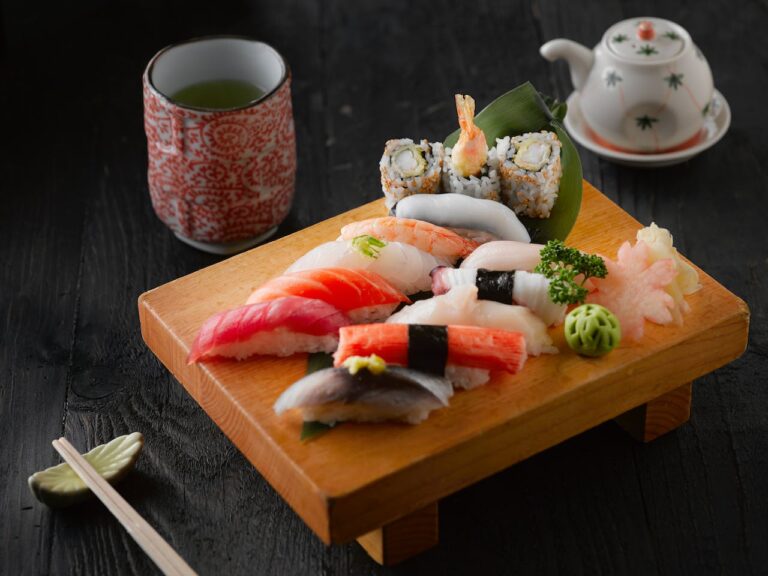Gluten-Free Sushi Making: Tips and Tricks for Celiac-Friendly Rolls

Introduction
Sushi has become a global culinary sensation, but for individuals with celiac disease or gluten sensitivity, enjoying this Japanese delicacy can be a challenge. Fear not! In this comprehensive guide, we will delve into the art of gluten-free sushi making, offering invaluable tips and tricks to ensure a safe and delicious culinary experience. Whether you’re a seasoned sushi enthusiast or a newcomer to the world of gluten-free cooking, this blog post will equip you with the knowledge and skills to create Celiac-friendly sushi rolls that are as delightful as they are safe.
Understanding the Gluten-Free Challenge in Sushi Making
When it comes to traditional sushi, the primary concern for those with gluten-related conditions is the soy sauce, which typically contains wheat. However, gluten can hide in unexpected places, such as imitation crab meat and certain types of vinegar. Before we jump into the tips and tricks, let’s explore the challenges of gluten-free sushi making.
Ingredients to Avoid for Gluten-Free Sushi Making
- Soy Sauce: A staple in sushi preparation, regular soy sauce contains wheat. Opt for gluten-free soy sauce or tamari as a substitute.
- Imitation Crab Meat: Often made with wheat-based starches, opt for real crab or other gluten-free alternatives like shrimp or cooked fish.
- Vinegar: Some types of vinegar, such as malt vinegar, may contain gluten. Choose rice vinegar or apple cider vinegar as gluten-free alternatives.
Gluten-Free Sushi Making: Tips and Tricks
Now that we’ve identified potential pitfalls, let’s dive into the tips and tricks for successful gluten-free sushi making.
1. Selecting the Right Rice
Choosing the right rice is crucial for gluten-free sushi making. Opt for high-quality sushi rice, which is naturally gluten-free. Rinse the rice thoroughly to remove excess starch, ensuring a perfect texture for your rolls.
2. Gluten-Free Nori Sheets
Ensure that the nori sheets you use are labeled gluten-free. While nori itself is gluten-free, cross-contamination during processing can occur. Look for trusted brands that specifically label their nori sheets as gluten-free.
3. Gluten-Free Soy Sauce Alternatives
Replace traditional soy sauce with gluten-free alternatives like tamari or coconut aminos. These alternatives provide the savory umami flavor without compromising your gluten-free goals.
Product Spotlight: Magic Roll Sushi Maker
If you’re looking to streamline your gluten-free sushi making process, consider the Magic Roll Sushi Maker from Market Mummy. This innovative product is dishwasher friendly, making cleanup a breeze. It also makes for an excellent gift, suitable for various occasions, ensuring a delightful sushi-making experience for friends and family.
4. Experimenting with Gluten-Free Fillings
Explore a variety of gluten-free fillings to add flavor and texture to your sushi rolls. Avocado, cucumber, smoked salmon, and fresh vegetables are excellent choices. Steer clear of processed meats and sauces that may contain hidden gluten.
5. Perfecting Gluten-Free Sauces
Crafting gluten-free sauces is essential for enhancing the flavor of your sushi. Create a gluten-free spicy mayo using gluten-free mayonnaise and a gluten-free sriracha sauce. Experiment with gluten-free teriyaki sauce for a sweet and savory kick.
6. Minding Cross-Contamination
When preparing gluten-free sushi, it’s crucial to prevent cross-contamination. Use separate cutting boards, knives, and utensils for gluten-free ingredients. Clean surfaces thoroughly to eliminate any traces of gluten.
7. Enhancing Presentation with Colorful Vegetables
Make your gluten-free sushi visually appealing by incorporating an array of colorful vegetables. Bell peppers, carrots, and radishes not only add vibrant hues but also contribute to a satisfying crunch.
8. Mastering the Rolling Technique
Achieving the perfect sushi roll requires practice. Use a bamboo sushi rolling mat lined with plastic wrap to prevent sticking. Wet your hands to handle the rice easily, and roll the sushi tightly for a seamless finish.
Conclusion
In the world of gluten-free sushi making, knowledge and preparation are key. By selecting gluten-free ingredients, experimenting with fillings and sauces, and using innovative tools like the Magic Roll Sushi Maker, you can create delectable sushi rolls that cater to a gluten-free lifestyle. Embrace the art of gluten-free sushi making, and embark on a culinary journey that celebrates both flavor and inclusivity. Happy rolling!




Leave a comment